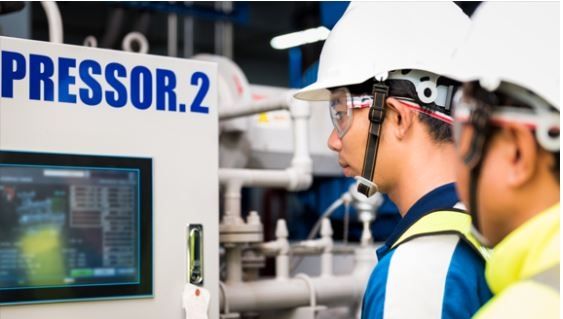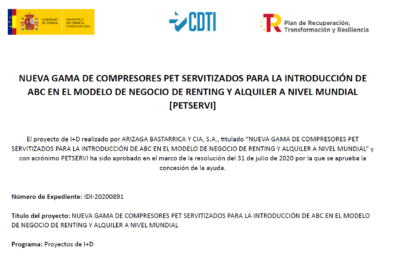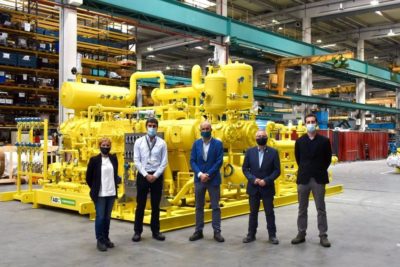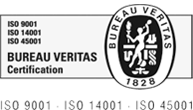Advances in compressor control and monitoring
12/10/2020

Even as far back when compressed air was generated by bellows in a blacksmith shop there has always been the need for control. Too much air and the furnace was too hot, too little and the flame would be too cool, and very quickly the operator tired of the job of adjusting things manually.
Hence the invention of automatic controls for compressed air, starting as simple as mechanical/pneumatic means (see Figure 1), and progressing to simple electrical controls using mercury switches. These days, with the easy availability of low cost and accurate sensing instruments, and many inexpensive data collection devices, the control and monitoring of a compressed air system is getting very sophisticated. This article discusses some old and new methods to monitor and control compressed air systems.
Goal of compressor control
The goal of any compressed air system is to produce a clean, dry, stable, and reliable flow of compressed air at an appropriate pressure and at an economical cost. It is not easy to achieve all the elements of this goal at once, with the many types of air compressors and associated equipment available on the market complicating matters. Often, because it is the most important, the control of pressure comes before economy, creating systems with very stable pressure, but extremely poor efficiency.
If there was no adequate method of pressure control, the air compressors would run continually without stop, filling up the compressed air system until it exploded due to high pressure. Any properly sized compressed air system will have excess capacity, and that capacity must somehow be controlled so that an exact amount of air is produced to match the changing compressed air demand. When both supply and demand matches, the pressure will remain stable.
Pressure control
The simplest and most common method of fixed speed compressor control uses a pressure switch that senses the pressure somewhere within the compressor output and starts the flow of air into a system when the pressure gets too low, removing flow if the pressure gets too high. To accomplish this a compressor might start or stop, or the unit might load and unload. The system will run at adequate pressure using this method, but only until the compressed air demand exceeds the capacity of the running compressor, then the system pressure will fall to lower than the set pressure band, requiring additional compressor capacity to be added or a flow reduction arranged.
The introduction of additional compressors into the system complicates matters. In order to properly control multiple compressors, the individual pressure control bands will have to be cascaded (see Figure 3). As you can see this strategy widens the resulting pressure over the full range of operation, providing somewhat economical compressor operation, but at the expense and with the goal of providing stable pressure. What complicates this method of control is that each pressure sensor is within its own individual compressor; this means it does not necessarily “see” the same pressure as the other compressors, especially if the other units are located a significant distance away. And the control of the pressure level is local, meaning that the discharge pressure at the compressor could be adequate, but the pressure downstream of air dryers and filters might sag to low levels. This means the actual plant pressure, the most important parameter, is not properly controlled with local control.
The lack of accurate control of plant pressure typically forces compressor discharge pressures higher to compensate, but often the required pressure setting reaches a high limit, since compressors cannot run at pressures above their ratings. As more and more compressors are added to the system, the task of adequately cascading compressors as well as maintaining the pressure at below the rating becomes impossible without causing high levels of inefficiency.
The introduction of variable speed drive (VSD) controls on compressors has complicated the cascading of the compressors, because VSDs need to be the trim unit (i.e., the unit producing partial flow) at all times. Adding one or more VSDs to a system requires rethinking the control strategy and applying some sort of sophisticated intelligent controls.
Single pressure band control
As compressor control development progressed, the need for better methods of compressor control was recognized and newly introduced programmable logic controllers (PLCs) provided a better method of control that used a single pressure band. An upper and lower control band is selected, ensuring it is within the compressor rating and high enough to ensure proper pressure. Then compressors are added or subtracted from the system by the PLC using fixed preprogrammed logic statements depending on system pressure. Typically, at first, the order of operation of the compressors was chosen by some technical person that was familiar with the flow profile of each individual plant. Compressor sizes were selected by experience to maximize efficiency under average conditions. This fixed order has its disadvantages because changes to the flow characteristic might occur after installation, or replacement of compressors might be done after a failure, both of which might require different logic for the most efficient control, but often the programmer of the PLC would be long gone at that point.
Most large compressor houses started to introduce their own single pressure band compressor control systems. Some simply programmed into modern local electronic compressor controls, with compressors tied together with communication wires, and yet others using central control boxes that orchestrated efficient compressor control based on the measurement of a pressure transducer located after the air dryers and filters. This remote sensing allowed plant pressure to be tightly controlled.
Early on, one major difficulty that emerged with branded compressor controllers was that the companies all had their own internal communication protocol. One manufacturer would use Profibus, the other CAN bus, the other Modbus, and yet another some proprietary language. This left users to make a choice, stay with one make and vintage of compressor, or suffer only basic control of any “odd duck” compressors that didn’t “speak” the controller language.
Flow feedback and decision making
The difficulty in communicating with and integrating different brands of compressors led to third-party development of compressor controllers, with units developed capable of connecting to all types of compressors. These third-party companies applied some excellent innovations, the most important being pressure control with flow feedback. In any compressed air system, if the system storage volume is known, the rating of the loaded compressors summed, and the pressure change over time monitored, the resulting system flow can be calculated without using a flowmeter. Designers found that by using this information the controller could be programmed to choose between available compressors: if a large unit would be more efficient, then it would be started; if only a smaller one was required, it would come online. In this way the system would be flexible enough to compensate for changing loads and available compressor availabilities.
As PLCs became more powerful, and HMIs more affordable, system monitoring and data logging soon became the norm on these central units. A system operator could monitor an LCD screen, or later, a web page and see the immediate status of the system, including alarms, pressures, powers, and flows. As memory size increased, the controllers became capable of storing key system data for years at a time for reference and comparison purposes. These innovations made central controllers even more useful and systems more efficient under varying conditions.
Artificial Intelligence and predictive analysis
These days most modern local compressor controllers have the capability of multiple communication protocols that can be used to capture data from compressors and even control the compressors by changing settings. The newest developing IoT trend is to install remote cell phone connected interfaces in each new compressor that gathers data and transmits it back to the OEM for analysis. Again, these systems are locked down by the manufacturer, not an open protocol, so having a useful full system monitoring system is difficult if you don’t have the correct make and vintage of compressor, and are not willing to pay a significant subscription fee. But, because of the high level of sophistication of the local controls, and the reliable communication protocols, some third-party companies, always looking for opportunity, are now using available cutting edge technology to integrate any make and model of compressor into a useful system monitoring, analysis, and control system.
Using low-cost communication devices connected to compressors, system transducers, and auxiliary equipment, a complete set of system data can be collected and transmitted to the cloud for analysis (see Figure 4). Then using off-site processing power, and artificial intelligence algorithms, the data can be mined for relevance. For example, a basic system controller will consist of a central box that communicates with the various compressors to determine status and then send control commands. Everything in this system is local, and the control algorithm fixed. But newer designs are proposing decentralized systems with no central system control box, one of the largest costs in installing a central controller. All the control system algorithms are decided in the cloud based on data analysis and stored dynamically on the local interfaces.
Instead of just querying compressor status, all the data from compressor controllers is downloaded continually (pressures, temperature, vibration, pressure differentials, alarms and warnings) and sent to the cloud for analysis. This wealth of data is fertile ground for good predictive analysis of the system, something that will increase the reliability and save major repair costs in the future.
This new technology will ensure a clean, dry, stable, and reliable flow of compressed air at an appropriate pressure and economical cost, all with minimal human interactions in the data analysis and control phase. The simplistic design will make systems like this affordable for more and more systems.
The future of compressor control is changing for the better, with more innovations yet to come in the future. And why control only compressors? Could control of other components or utilities be far behind?
Noticias
relacionadas
Oct

Proyecto PETSERVI
Oct

Coca-Cola continues to lead sustainable solutions for plastic recovery and recycling in PHL
Plastic—lightweight, strong, and easily molded into various forms—has no doubt revolutionized our everyday lives and has …
Jun

Visita de autoridades a ABC Compressors
El pasado viernes recibimos la visita del diputado de Medio Ambiente de Gipuzkoa, José Ignacio Asensio junto …
-
CERTIFICACIONES
-

-

